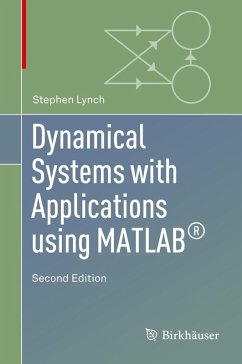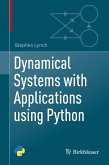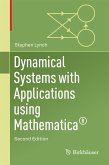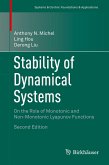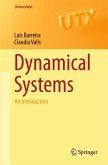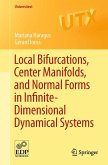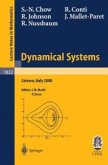This textbook, now in its second edition, provides a broad introduction to both continuous and discrete dynamical systems, the theory of which is motivated by examples from a wide range of disciplines. It emphasizes applications and simulation utilizing MATLAB®, Simulink®, the Image Processing Toolbox(TM), and the Symbolic Math Toolbox(TM), including MuPAD.
Features new to the second edition include
· sections on series solutions of ordinary differential equations, perturbation methods, normal forms, Gröbner bases, and chaos synchronization;
· chapters on image processing and binary oscillator computing;
· hundreds of new illustrations, examples, and exercises with solutions; and
· over eighty up-to-date MATLAB® program files and Simulink model files available online. These files were voted MATLAB® Central Pick of the Week in July 2013.
The hands-on approach of Dynamical Systems with Applications using MATLAB®, Second Edition, has minimal prerequisites, only requiring familiarity with ordinary differential equations. It will appeal to advanced undergraduate and graduate students, applied mathematicians, engineers, and researchers in a broad range of disciplines such as population dynamics, biology, chemistry, computing, economics, nonlinear optics, neural networks, and physics.
Praise for the first edition
Summing up, it can be said that this text allows the reader to have an easy and quick start to the huge field of dynamical systems theory. MATLAB/SIMULINK facilitate this approach under the aspect of learning by doing.
-OR News/Operations Research Spectrum
The MATLAB programs are kept as simple as possible and the author's experience has shown that this method of teaching using MATLAB works well with computer laboratory classes of small sizes.... I recommend 'Dynamical Systems with Applications using MATLAB' as a good handbook for a diverse readership: graduates and professionals in mathematics, physics, science and engineering.
-Mathematica
Features new to the second edition include
· sections on series solutions of ordinary differential equations, perturbation methods, normal forms, Gröbner bases, and chaos synchronization;
· chapters on image processing and binary oscillator computing;
· hundreds of new illustrations, examples, and exercises with solutions; and
· over eighty up-to-date MATLAB® program files and Simulink model files available online. These files were voted MATLAB® Central Pick of the Week in July 2013.
The hands-on approach of Dynamical Systems with Applications using MATLAB®, Second Edition, has minimal prerequisites, only requiring familiarity with ordinary differential equations. It will appeal to advanced undergraduate and graduate students, applied mathematicians, engineers, and researchers in a broad range of disciplines such as population dynamics, biology, chemistry, computing, economics, nonlinear optics, neural networks, and physics.
Praise for the first edition
Summing up, it can be said that this text allows the reader to have an easy and quick start to the huge field of dynamical systems theory. MATLAB/SIMULINK facilitate this approach under the aspect of learning by doing.
-OR News/Operations Research Spectrum
The MATLAB programs are kept as simple as possible and the author's experience has shown that this method of teaching using MATLAB works well with computer laboratory classes of small sizes.... I recommend 'Dynamical Systems with Applications using MATLAB' as a good handbook for a diverse readership: graduates and professionals in mathematics, physics, science and engineering.
-Mathematica
Dieser Download kann aus rechtlichen Gründen nur mit Rechnungsadresse in A, B, BG, CY, CZ, D, DK, EW, E, FIN, F, GR, HR, H, IRL, I, LT, L, LR, M, NL, PL, P, R, S, SLO, SK ausgeliefert werden.
"The present book constitutes an introduction to the main concepts and techniques of dynamical systems ... . this book constitutes a valuable reference to the existing literature on dynamical systems, specially for the remarkable collection of examples and applications selected from very different areas as well as for its treatment with MATLAB of these problems." (Fernando Casas, zbMATH 1319.37002, 2015)
"Dynamical Systems with Applications using MATLAB provides a comprehensive introduction to the theory of dynamical systems and is designed for use by both advanced undergraduate and beginning graduate students. Its vast compilation of applications also makes this text a great resource for applied mathematicians, engineers, physicists, and researchers ... . Instructors will be pleased to find an aims and objectives section at the beginning of each chapter where the author outlines its content and provides student learning objectives." (Stanley R. Huddy, MAA Reviews, November, 2014)
"Dynamical Systems with Applications using MATLAB provides a comprehensive introduction to the theory of dynamical systems and is designed for use by both advanced undergraduate and beginning graduate students. Its vast compilation of applications also makes this text a great resource for applied mathematicians, engineers, physicists, and researchers ... . Instructors will be pleased to find an aims and objectives section at the beginning of each chapter where the author outlines its content and provides student learning objectives." (Stanley R. Huddy, MAA Reviews, November, 2014)

